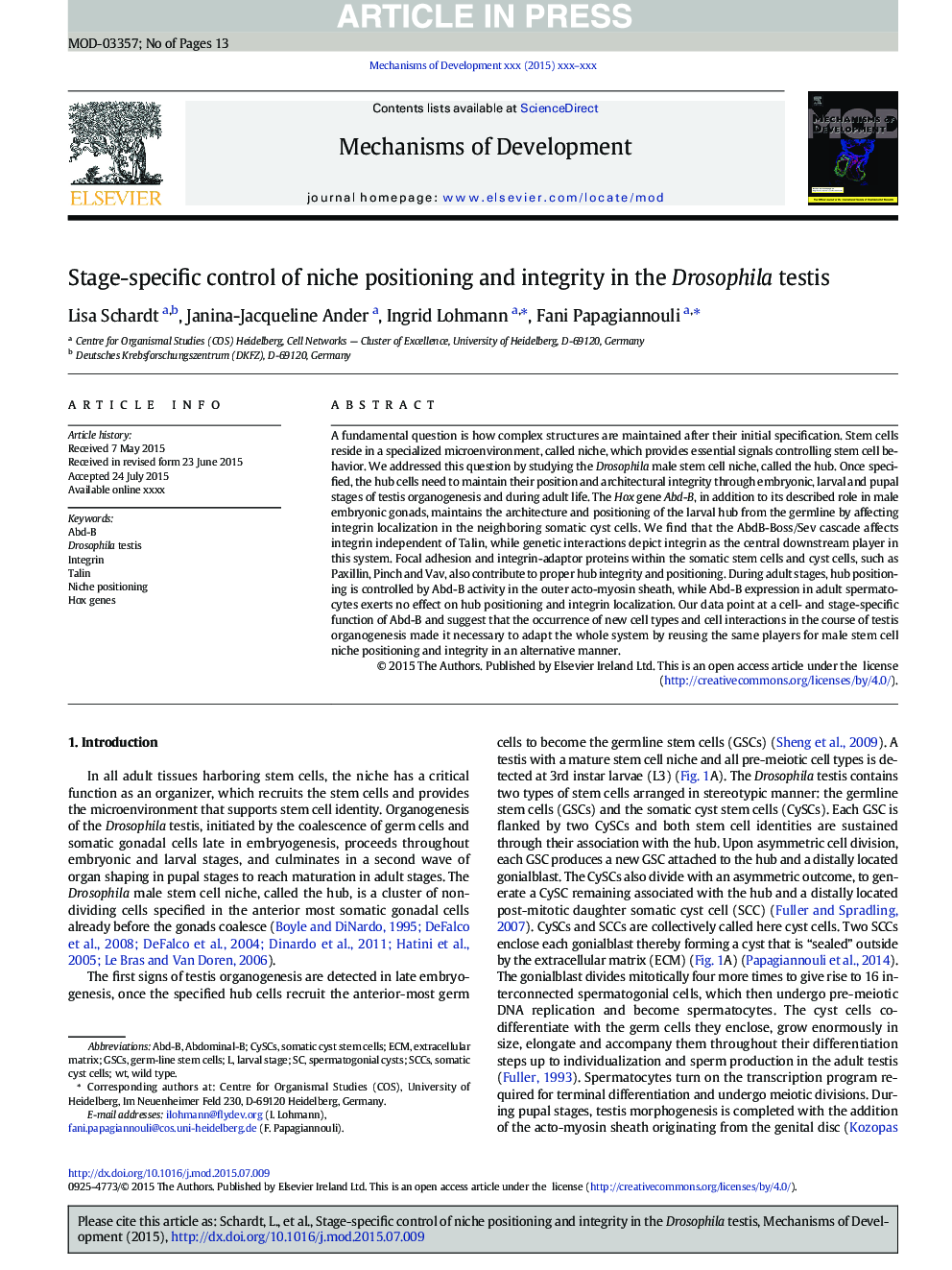| Article ID | Journal | Published Year | Pages | File Type |
|---|---|---|---|---|
| 8475932 | Mechanisms of Development | 2015 | 13 Pages |
Abstract
A fundamental question is how complex structures are maintained after their initial specification. Stem cells reside in a specialized microenvironment, called niche, which provides essential signals controlling stem cell behavior. We addressed this question by studying the Drosophila male stem cell niche, called the hub. Once specified, the hub cells need to maintain their position and architectural integrity through embryonic, larval and pupal stages of testis organogenesis and during adult life. The Hox gene Abd-B, in addition to its described role in male embryonic gonads, maintains the architecture and positioning of the larval hub from the germline by affecting integrin localization in the neighboring somatic cyst cells. We find that the AbdB-Boss/Sev cascade affects integrin independent of Talin, while genetic interactions depict integrin as the central downstream player in this system. Focal adhesion and integrin-adaptor proteins within the somatic stem cells and cyst cells, such as Paxillin, Pinch and Vav, also contribute to proper hub integrity and positioning. During adult stages, hub positioning is controlled by Abd-B activity in the outer acto-myosin sheath, while Abd-B expression in adult spermatocytes exerts no effect on hub positioning and integrin localization. Our data point at a cell- and stage-specific function of Abd-B and suggest that the occurrence of new cell types and cell interactions in the course of testis organogenesis made it necessary to adapt the whole system by reusing the same players for male stem cell niche positioning and integrity in an alternative manner.
Keywords
Related Topics
Life Sciences
Biochemistry, Genetics and Molecular Biology
Cell Biology
Authors
Lisa Schardt, Janina-Jacqueline Ander, Ingrid Lohmann, Fani Papagiannouli,
